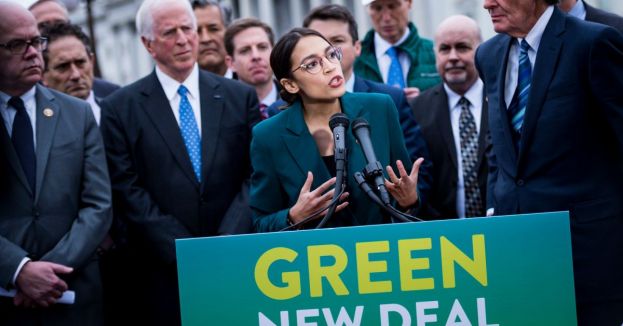The provision, which has been named a “decelerator,” is tucked into the clean electricity standard top Democrats on the House Energy and Commerce Committee recommended in sweeping climate legislation last month. It could work as an olive branch to the utility industry, which has boosted concerns companies wouldn’t be able to reach a 2035 timeline.
The provision is likewise an acknowledgment of the immense transformation the power sector would need to undergo to transition from about 60% fossil fuels as of last year, according to Energy Information Administration data, to 100% carbon-free power in about 15 years.
WATCH: NICOLE WALLACE AND THE END OF DEMOCRACY![]()
“There’s an understanding of how ambitious that target date is implicit in it, and there are mechanisms to mitigate that that are part of the bill,” remarked Conrad Schneider, advocacy director for the Clean Air Task Force.
A clean electricity standard fixes targets for utilities to buy a certain amount of low-carbon power, ratcheting up those targets each year until utilities are purchasing carbon-free power by a certain date. In their bill, House Energy and Commerce Democrats set a target for 100% carbon-free power by 2035 to meet President Joe Biden’s climate aims, a change from their 2020 proposal that had aimed for 2050.
YIKES! IS MARJORIE TAYLOR GREENE LOSING HER 'GRIP' IN POWER STRUGGLE?![]()
House Democrats’ clean electricity standard functions similarly to an emissions trading system, in which utilities get credits for the clean electricity they generate. Power companies have to earn enough credits to meet increasing requirements to provide clean power, or they can decide to pay alternative compliance payments if they don’t have sufficient to meet the demands.
WATCH: FETTERMAN CONFRONTED BY A PRO-HAMAS ACTIVIST![]()
The “decelerator” provision is triggered if a power company is paying alternative compliance payments to cover over 10% of the clean energy credits they should be earning for two years in a row — in other words, struggling to reach the level of clean electricity it should be purchasing to satisfy the demands.
TESLA IN TURMOIL: MUSK OUSTS TOP EXECS AND PREPARES FOR MASSIVE LAYOFFS, WHAT'S HAPPENING?![]()
Officials could then defer raising the clean power demands for that company for one year, according to the bill text. That relief is only available in the later years of the policy, starting in 2031.
Many utilities announce they've outlined strategies to reach at least an 80% carbon emissions reduction with existing technology. Companies are worried, though, that they could run into hurdles eliminating carbon entirely from their systems without progress to bring the costs down for technologies such as advanced nuclear reactors and carbon capture.
PROFESSIONAL "PROTEST CONSULTANT" CAUGHT ON VIDEO STIRRING UP CHAOS AT COLUMBIA UNIVERSITY![]()
“Meeting any target is going to require substantial investments in research, development, demonstration, and deployment, so the top priority is scaling up these efforts,” said Brian Reil, a spokesman for the utility lobby Edison Electric Institute, recently.








 Discover alternative ideas that will make you think
Discover alternative ideas that will make you think Engage in mind bending debate
Engage in mind bending debate Earn points, rise in rank, have fun
Earn points, rise in rank, have fun


